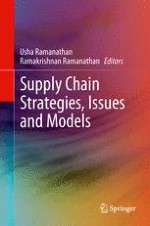2014 | OriginalPaper | Buchkapitel
A Systematic Approach to Analyze the Information in Supply Chain Collaboration: A Conceptual Framework
verfasst von : Usha Ramanathan
Erschienen in: Supply Chain Strategies, Issues and Models
Verlag: Springer London
Aktivieren Sie unsere intelligente Suche, um passende Fachinhalte oder Patente zu finden.
Wählen Sie Textabschnitte aus um mit Künstlicher Intelligenz passenden Patente zu finden. powered by
Markieren Sie Textabschnitte, um KI-gestützt weitere passende Inhalte zu finden. powered by
